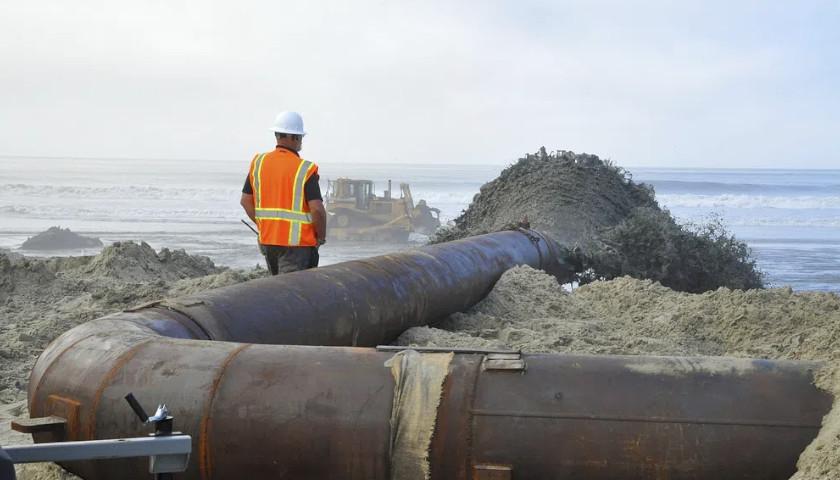by Anthony Hennen
A recent analysis determined the United States sits on a century’s worth of gas supply, but industry experts warn there aren’t enough pipelines to access it.
The report from the Potential Gas Committee, part of the Colorado School of Mines, found that the country had technically recoverable gas resources of 3,353 trillion cubic feet, a 0.5% decrease from its 2020 estimate.
Despite this, however, total future supply has hit the highest level recorded by the committee in 60 years.
Steven Sonnenberg of the Colorado School of Mines noted they have seen a “bit of a plateau in recent years,” but “proved reserves are also increasing,” which represents more drilling activity from companies. It also shows more natural gas is moving from potential underground fields to actual reserves.
The Energy Information Administration tracks proved reserves, which are confirmed gas supplies, while the committee tracks unconfirmed probable resources (like field extensions or new pools in discovered natural gas areas), possible resources (like new natural gas fields), and speculative resources (where new basins might be).
“We’re essentially at all-time highs with both cumulative production, crude production, and these gas resource numbers,” Sonnenberg said.
The U.S. consumes about 30 trillion cubic feet of natural gas annually, Sonnenberg noted, which would mean the country has a “100-year resource of natural gas” with its proven and estimated supply.
Natural gas supplies in the Atlantic area, in which Pennsylvania resides, declined by 2.5% to 1,259 Tcf, but remain the most significant part of the country, with 40% of the country’s natural gas supply.
“All of the increases in the Atlantic Area’s assessment since 2016 arose from ongoing evaluation of Appalachian basin shales, predominantly the prolific Marcellus in Pennsylvania and West Virginia,” the committee’s report noted.
Pennsylvania in recent years has seen record revenues from its impact fee, which distributes money to local governments where natural gas production occurs. The Independent Fiscal Office, however, expects those payouts to decline.
Production growth has also stalled, which industry advocates argue is a result of pipeline capacity limits and permitting delays, while environmental groups charge that natural gas production has permanently plateaued.
The committee acknowledges that without more pipelines, the gas supply will sit unused.
“The availability of pipelines to get the product out of the shale gas fields in particular — there’s only so much they can get to market without more of that infrastructure,” Committee President Kristin Carter said. “For that reason, you might have inactive wells … those things will put a hold on the resource assessments.”
– – –
Anthony Hennen is a reporter for The Center Square news wire service, covering Pennsylvania, and co-host of Pennsylvania in Focus, a weekly podcast on America’s Talking Network. Previously, he worked for Philadelphia Weekly and the James G. Martin Center for Academic Renewal. He is managing editor of Expatalachians, a journalism project focused on the Appalachian region.





